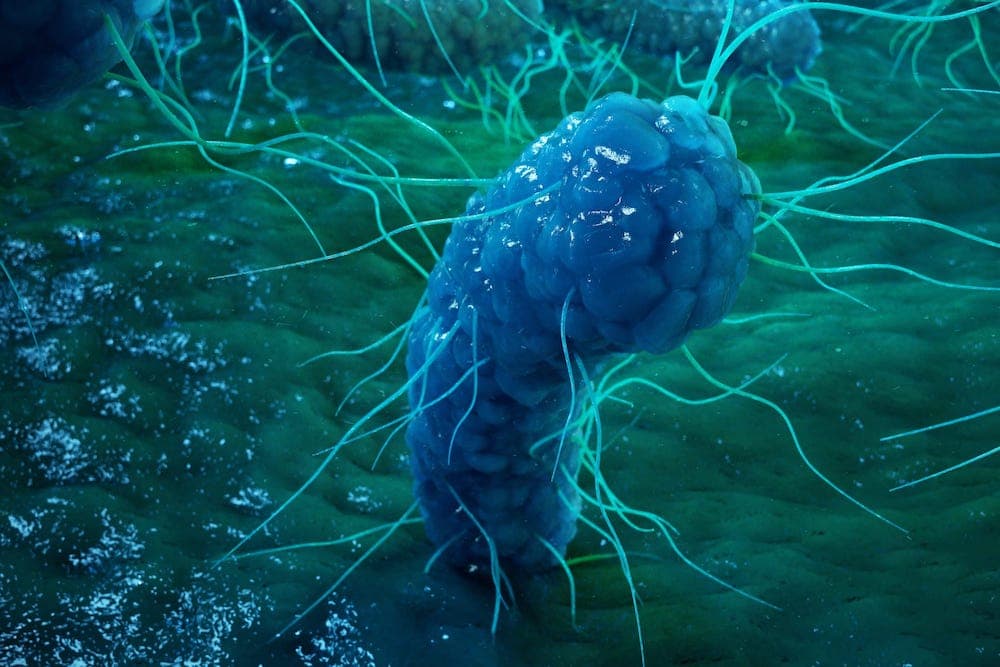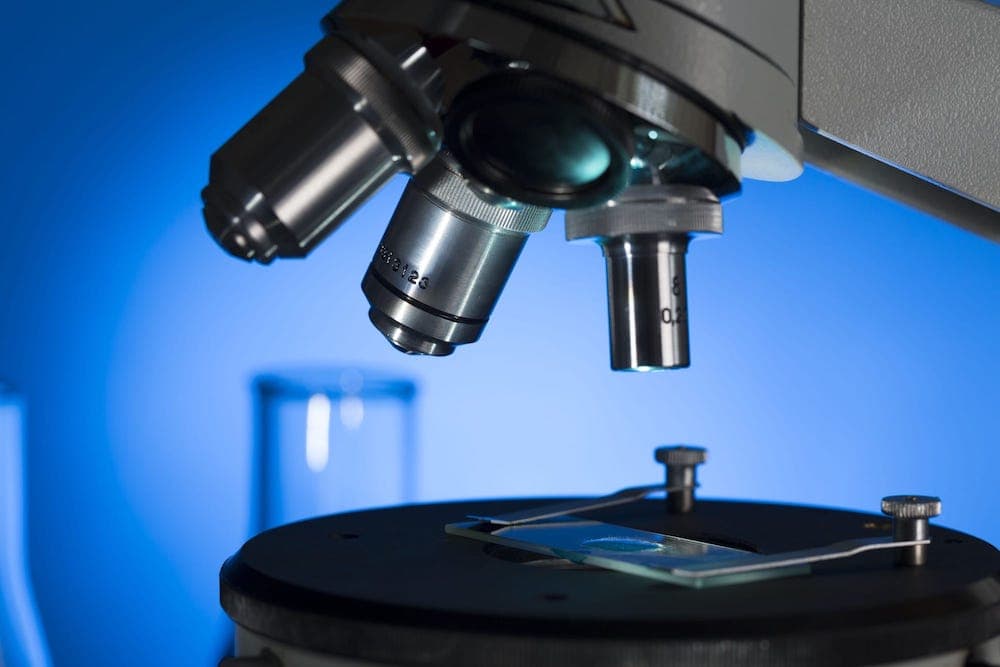Learn : Health & Wellness
Microbiome Diversity
Within a particular environment, the term "diversity" typically refers to how many different species can be identified. The diversity of an ecosystem can occasionally reflect how healthy it is considered to be. For instance, tropical rainforests contain more than half of our planet’s plant and animal species. They are also easily recognized as one of the most diverse locations on Earth1. However, as rainforests are destroyed two effects can be observed: (1) fewer animal species are present and (2) those that remain may exist in relatively lower numbers.
These two factors, called species richness (the number of species in a population) and species evenness (how well represented each species is relative to others) result in lower overall diversity in that environment2.
For example, let’s say that two locations have the same number of individuals. Location A has 5 monkeys, 2 tigers, 3 toucans, and 4 panthers. Location B has 12 monkeys and 2 panthers. Location A is more diverse not only because it has more species (richness), but also because they are more evenly distributed (evenness).
The richness of location A is 4 compared to only 2 in location B.
Location A has an evenness of 0.96 while in location is much lower at 0.60. Values of evenness always fall between 0 and 1, where numbers closer to 1 indicate it is . These numbers can further be combined to give an overall metric of diversity, called diversity index (SDI). The diversity index takes into consideration many species are present (richness) and their overall representation relative to other species (evenness).
Such a concept can also be applied to our microbiome. Trillions of microbes (including viruses and fungi) inhabit mammalian intestinal tracts, creating a complex community that helps us digest food and stay healthy. Until the recent advent of sequencing techniques that have allowed researchers to obtain much larger datasets about the types of microbes living in our guts, we had no knowledge of how diverse the human microbiome was, as scientists have been able to grow only a small percentage of gut bacteria in the lab.
With more efficient sequencing, we now know that the microbiomes of humans, mice3, dogs, cats4, and other animals are filled with a diverse plethora of various bacterial symbionts that aid in bodily functions and health. Researchers have been able to investigate how many different bacterial species colonize our intestines (richness), how well each species is represented relative to others (evenness), and what fundamental roles they perform in the body.
What does "gut microbiome diversity" mean?
The bacteria that colonize an animal’s intestines are influenced by things like diet5,6, the environment in which they live7, and medical treatments such as antibiotics8. Changes in the microbiome composition and how diverse the population is typically measured in two ways: taxonomic diversity and functional diversity.
Taxonomic diversity9 describes how many different types of bacteria are found in terms of their taxonomic rankings. That is how many assorted species, genera, orders, phyla, and so on are observed in samples. Although initial theories proposed that animal species had a "core" microbiome9, meaning a require set of bacterial species, studies have shown that substantial differences exist between individuals. This means that while species A is found in one person, it may not be found in others, and both may have completely healthy microbiomes.
Functional diversity9, on the other hand, refers to the specific jobs each species fulfills in their host. Imagine surveying a warehouse and picking out which employees are performing different jobs. Some roles are fulfilled by one person, others by multiple, but they work together and the warehouse runs smoothly.
The microbiota works in a similar way. Species X and Y digest fiber, species W metabolizes fats, and species X and Z help keep the gut healthy by outcompeting pathogenic bacteria. Research looking at humans, dogs, and cats has found that although taxonomic diversity tends to be different between individuals, meaning that people may harbor different bacterial strains than their friends, scientists find more similarities in functional diversity4,9. This would suggest that the general roles performed by the microbiome in animal health are similar, but the players (i.e. the specific bacterial species) may be different.
Implications of microbiome diversity in health
We still do not know the full scope of diversity in the gut microbiome. Most studies focus on fecal samples, which do not necessarily capture species that colonize the stomach or more distant parts of the intestines. More recent research done in both dogs and cats has found that the microbiome composition varies along its length10,11, which prompts further study into its importance. Additionally, the majority of studies have been conducted in mouse models and humans, although researchers have expanded to other animals including dogs, cats, koalas, red pandas, and insects12.
Multiple studies have found that lower diversity is associated with various diseases like inflammatory bowel disease13, obesity14, type 115 and type 216 diabetes, and psoriatic arthritis17. Many people take probiotics in an effort to either recover or retain their healthy microbiota and they have shown some promise for resolving intestinal symptoms like diarrhea. Obliterating microbial populations in the gut after antibiotic treatment, which severely impacts diversity, has been linked to Clostridium infections18 in humans. Restoring the microbiota with a fecal transplant has proven to be effective and prompted veterinarians to begin exploring this method to treat parvovirus in puppies19.
Diet5 may also play a role in decreasing microbial diversity, as typical Western diets tend to be rich in sugar and fat in place of fiber, which promotes bacterial growth20. However, dietary changes can subsequently increase microbiome diversity and improve microbiome health. For example, one study found that switching dogs to either a low-protein, high-carb or high-protein, low-carb diet increased the evenness of their microbiome21.
Conversely, studies have demonstrated that more diverse microbiomes may be similarly problematic22,23. For instance, a more diverse microbiome in Great Danes was associated with a higher risk of gastric dilatation-volvulus24, a life-threatening condition where the stomach dilates to the point that food and gas cannot pass into the intestines. This could mean that there is a "" for microbial diversity that is maintained in the body and fluctuations outside relatively normal conditions might result in negative consequences. It could also be that greater diversity during disease is reflective of an increased number of disruptive species that are displacing beneficial ones. Perhaps a pathogenic strain can only grow when another species is found at a low rate. Maybe a normally benign species becomes dangerous when it grows beyond a certain threshold.
But what is a "normal" range of diversity seen in the gut microbiome? Which species are more important than others? How much of each species do animals need? How different are the requirements between individuals? Can we intervene to control its diversity? How does it directly relate to disease? While we have some knowledge concerning such questions, these are still active areas of investigation in microbiome research in all animals. We hope that science can provide fascinating answers in the future.
Closing remarks
Although people tend to describe the microbiome as a single entity, it is a dynamic mixture of microorganisms that impact an assortment of bodily functions – from digestion to the brain25. Current research indicates that the microbiome of a single individual is fairly stable during adulthood, which provides benefits like resilience to invasion by new species9. However, scientists are constantly learning how this diversity shifts based on circadian rhythms26, pregnancy27, age28, environment7, diet5,6, and more. As more studies accumulate characterizing healthy microbiomes by their taxonomic and functional characteristics, we can better understand how this diverse population of microbes combines for the benefit or detriment of their host.
References
- Smith, J. M. B. Tropical rainforest. Encyclopædia Britannica (2018).
- Stirling, G. & Wilsey, B. Empirical Relationships between Species Richness, Evenness, and Proportional Diversity. Am. Nat. 158, 286–299 (2001).
- Kostic, A. D., Howitt, M. R. & Garrett, W. S. Exploring host-microbiota interactions in animal models and humans. Genes Dev. 27, 701–718 (2013).
- Barko, P. C., McMichael, M. A. & Swanson, K. S. The gastrointestinal microbiome: a review. Journal of veterinary (2018).
- Heiman, M. L. & Greenway, F. L. A healthy gastrointestinal microbiome is dependent on dietary diversity. Mol Metab 5, 317–320 (2016).
- Kim, J., An, J.-U., Kim, W., Lee, S. & Cho, S. Differences in the gut microbiota of dogs (Canis lupus ) fed a natural diet or a commercial feed revealed by the Illumina MiSeq platform. Gut Pathog. 9, 68 (2017).
- Vega, N. M. & Gore, J. Stochastic assembly produces heterogeneous communities in the Caenorhabditis intestine. PLoS Biol. 15, e2000633 (2017).
- Suez, J. et al. Post-Antibiotic Gut Mucosal Microbiome Reconstitution Impaired by Probiotics and Improved by Autologous FMT. Cell 174, 1406–1423.e16 (2018).
- Lozupone, C. A., Stombaugh, J. I., Gordon, J. I., Jansson, J. K. & Knight, R. Diversity, stability and resilience of the human gut microbiota. Nature 489, 220–230 (2012).
- Honneffer, J. B., Steiner, J. M., Lidbury, J. A. & Suchodolski, J. S. Variation of the microbiota and metabolome along the canine gastrointestinal tract. Metabolomics 13, 26 (2017).
- Ritchie, L. E., Steiner, J. M. & Suchodolski, J. S. Assessment of microbial diversity along the feline intestinal tract using 16S rRNA gene analysis. FEMS Microbiol. Ecol. 66, 590–598 (2008).
- Bahrndorff, S., Alemu, T., Alemneh, T. & Lund Nielsen, J. The Microbiome of Animals: Implications for Conservation Biology. Int. J. Genomics Proteomics 2016, 5304028 (2016).
- Omori, M. et al. Fecal microbiome in dogs with inflammatory bowel disease and intestinal lymphoma. J. Vet. Med. Sci. 79, 1840–1847 (2017).
- Menni, C. et al. Gut microbiome diversity intake are related to lower long-term weight gain. Int. J. Obes. 41, 1099–1105 (2017).
- Zheng, P., Li, Z. & Zhou, Z. Gut microbiome in type 1 diabetes: A comprehensive review. Diabetes. Metab. Res. Rev. 34, e3043 (2018).
- Upadhyaya, S. & Banerjee, G. Type 2 diabetes and gut microbiome: at the intersection of known and unknown. Gut Microbes 6, 85–92 (2015).
- Eppinga, H., Konstantinov, S. R., Peppelenbosch, M. P. & Thio, H. B. The microbiome and psoriatic arthritis. Curr. Rheumatol. Rep. 16, 407 (2014).
- Samarkos, M., , E. & Kampouropoulou, O. The role of gut microbiota in Clostridium infection. Eur. J. Intern. Med. 50, 28–32 (2018).
- Pereira, G. Q. et al. Fecal microbiota transplantation in puppies with canine parvovirus infection. J. Vet. Intern. Med. 32, 707–711 (2018).
- Slavin, J. Fiber and prebiotics: mechanisms and health benefits. Nutrients 5, 1417–1435 (2013).
- Li, Q., Lauber, C. L., Czarnecki-Maulden, G., Pan, Y. & Hannah, S. S. Effects of the Dietary Protein and Carbohydrate Ratio on Gut Microbiomes in Dogs of Different Body Conditions. MBio 8, (2017).
- Clemente, J. C., Ursell, L. K., Parfrey, L. W. & Knight, R. The impact of the gut microbiota on human health: an integrative view. Cell 148, 1258–1270 (2012).
- Hullar, M. A. J., Lampe, J. W., Torok-Storb, B. J. & Harkey, M. A. The canine gut microbiome is associated with higher risk of gastric dilatation-volvulus and genetic variants of the immune system. PLoS One 13, e0197686 (2018).
- Gastric Dilatation-Volvulus | ACVS. Available at: https://www.acvs.org/small-animal/gastric-dilatation-volvulus. (Accessed: 5th December 2018)
- Galland, L. The gut microbiome and the brain. J. Med. Food 17, 1261–1272 (2014).
- Rosselot, A. E., Hong, C. I. & Moore, S. R. Rhythm and bugs: circadian clocks, gut microbiota, and enteric infections. Curr. Opin. Gastroenterol. 32, 7–11 (2016).
- Edwards, S. M., Cunningham, S. A., Dunlop, A. L. & Corwin, E. J. The Maternal Gut Microbiome During Pregnancy. MCN Am. J. Matern. Child Nurs. 42, 310–317 (2017).
- Odamaki, T. et al. Age-related changes in gut microbiota composition from newborn to centenarian: a cross-sectional study. BMC Microbiol. 16, 90 (2016).



 Microbiome in Nutrition
Microbiome in Nutrition
 Probiotics For Dogs
Probiotics For Dogs
 Microbes in the Gut
Microbes in the Gut
 Evolution of Microbiome Research
Evolution of Microbiome Research
 Probiotics and Pet Health
Probiotics and Pet Health